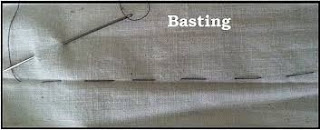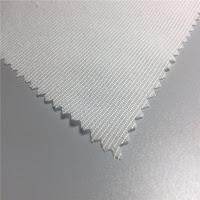Plush Sewing Terms with Description Only the Pros Know
Sewing - is a craft for women as old as time, for this time-honored craft is about personalizing things. Have you ever wondered if there are sewing terms and descriptions that everyone but you know because you're just not a pro? Well, lucky for you, this is the ultimate for every sewist! Not only does it contain detailed descriptions of the most frequently used sewing terms, but it also has some hacks which will make your sewing life easier.
Plush Sewing Terms with Description Only the Pros Know
❤ APPLIQUE:
The sewing method known as appliqué involves layering fabric patches on a foundation fabric and putting them in place either by hand or machine, turning the raw edges under or hiding them with ornamental stitching.
❤ BACKSTITCH:
Back Stitch is made by moving the thread backward rather than forward. that's why it got that name. It handles curves well. There are no gaps between the stitches, giving it a seamless appearance. Back Stitch is great for securing seams. It is a super-strong hand stitch that can be used in place of machine stitching when necessary. It is much stronger than the standard Running Stitch, but it requires more thread.❤APPLIQUE WHIP STITCH:
❤ GUSSET:
A piece of cloth that is put into a seam to increase breadth is known as a gusset. From two dimensions to three dimensions, it can take various shapes. Gussets are typically included in soft toy designs at the head and the animal's bottom. The animal's head has a rounder, more realistic shape due to the head gusset.
❤ BASTING:
Basting is a method for temporarily holding cloth layers together. Hand basting: You have total control over the fabrics while using manual sewing and a single strand of thread.
❤ FUSIBLE FABRIC:
Fabric that can be ironed onto another surface is said to be fusible. By using fusible web interfacing, such as Heat Bond or Wonder Under, to adhere the fabric, you can create a fusible fabric. Making appliqués using fusible fabric is a no-sew option.
❤NOTION:
A broad variety of materials, tools, and accessories are included in what is known as sewing notions, which are the little tools and accessories used to accomplish sewing projects. Basic sewing supplies such as needles, thread, and pins are examples of sewing notions. They also include tools for cutting, marking, measuring, and pressing.
❤ WITH OR WITHOUT NAP:
By adjusting the face's contour with thread, you can give it more depth. To somewhat drag the eyeballs back into the head, I'll be thread sculpting (also known as needle sculpting) the eye sockets. This will offer a really natural aspect to the face.
Thank you so much. For more patterns follow our Blog to receive notifications.
Follow for more in my Ig @sugar_honey_crafts
.png)









.png)

Comments
Post a Comment